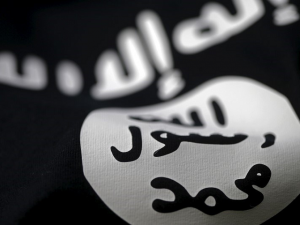Friends and family have begun to identify the men Islamic State media say were responsible for the lethal attack on an upscale cafe in Dhaka, Bangladesh, Friday. The men, they say, came from wealthy families and were highly educated before disappearing to join the international jihad.
The Dhaka Tribune reports that relatives and friends on social media have begun to openly identify the men in the photos holding firearms in front of the Islamic State flag. At least three men have been sufficiently positively identified, with others posting guesses online as to who they were before they became active jihadis. The newspaper notes that those identified “came from affluent families in Dhaka and studied at top schools or universities.”
The newspaper adds that the photos the Islamic State released do not seem to match the photos law enforcement in the country have released of the alleged attackers, according to “social media users who claim to be friends and sometimes even family of the pictured men.” The Tribune struggled to identify the men, as those identified no longer appear to have publicly searchable Facebook pages.
Bangladesh’s Information and Broadcasting Minister Hassanul Haq Inna confirmed to India’s NDTV that the men came from privileged backgrounds: “The terrorists were from a top school and University in Dhaka. … Some of the terrorists were from the Scholastic School — a very well-known school and private university.” He added that the jihadis’ families have “secular credentials.”
The Tribune also notes that the men identified had all been missing for months, leading many to believe they received terrorist training in Syria or Iraq. Law enforcement have not confirmed this speculation, however; on the contrary, authorities have insisted that current evidence points to the Dhaka siege being an act of terror organized in Bangladesh by nationals.
Six attackers were killed during the siege. The Islamic State only released five photos, however.
The New York Times reports that a major source of uncertainty regarding the identities of the terrorists is that police have failed to confirm who they were in the absence of anyone coming to the morgue to identify their kin. The newspaper reached Meer Hayet Kabir, a man police called in, asking him to positively identify his son. Meer Saameh Mubasher, 18 years old, had gone missing in February, and Kabir had reached out to police immediately following his disappearance.
Meer Saameh Mubasher was a student at the Scholastic School mentioned by the Information and Broadcasting Minister as among the nation’s best.
“How will we arrange a funeral for him in these circumstances? Who will come?” Kabir told The New York Times, as a way of explaining why he had not gone to the police and identified his son yet. “I will have to apologize to the whole world on behalf of my son.”
The Islamic State has increased resources directed towards jihadist recruiting in Bangladesh. The terrorist organization’s appeal to Bangladeshi men was particularly prominent in the April issue of the English-language propaganda magazine Dabiq, featuring an interview with a local jihadi and an obituary for a slain Bengali terrorist.
Bangladesh has been the site of a growing number of Islamist attacks. Gangs of machete-wielding Muslims have hacked to death secular bloggers, professors, LGBT activists, and other “infidels” in the past six months with increasing frequency. Speaking to The New York Times in early June, police counterterrorism head Monirul Islam noted that police are struggling to contain the attacks because mainstream Bangladeshi Muslims support them. “In general, people think they have done the right thing, that it’s not unjustifiable to kill,” he said.
In remarks on Saturday, Prime Minister of Bangladesh Sheikh Hasina asserted that the acts of the Islamic State are not Islamic. “Islam is a religion of peace. Stop killing in the name of the religion,” she demanded.
breitbart.com



